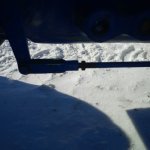LondonDave
Bronze Member
- Joined
- Feb 25, 2015
- Messages
- 72
- Location
- Melbourne, Ontario Canada
- Tractor
- John Deere 5410 MFWD, Case IH 5230 MFWD
Hi Guys,
New member, first post. I've used this site a lot when researching various things. I finally got around to signing up.
I have a 1990s (93 I think) Ford 3930 with a manual transmission. It's been working great all winter. I last used it a few days ago and no problems at all. Today when I went to use it, it would hardly move. It started right up and revved right up, hydraulics work fine but it won't hardly go forward or reverse. It will evenutally build some speed but there is virtually nothing there when I let out the clutch. My first thought is something is frozen/stuck but I've used it in weather just as cold when it's been sitting just as long and haven't had an issue. I don't have anywhere to bring it inside to warm it up so that's out. It is plugged in but I don't think that would do anything for the clutch if that's what is the issue.
Thanks
Dave
New member, first post. I've used this site a lot when researching various things. I finally got around to signing up.
I have a 1990s (93 I think) Ford 3930 with a manual transmission. It's been working great all winter. I last used it a few days ago and no problems at all. Today when I went to use it, it would hardly move. It started right up and revved right up, hydraulics work fine but it won't hardly go forward or reverse. It will evenutally build some speed but there is virtually nothing there when I let out the clutch. My first thought is something is frozen/stuck but I've used it in weather just as cold when it's been sitting just as long and haven't had an issue. I don't have anywhere to bring it inside to warm it up so that's out. It is plugged in but I don't think that would do anything for the clutch if that's what is the issue.
Thanks
Dave
